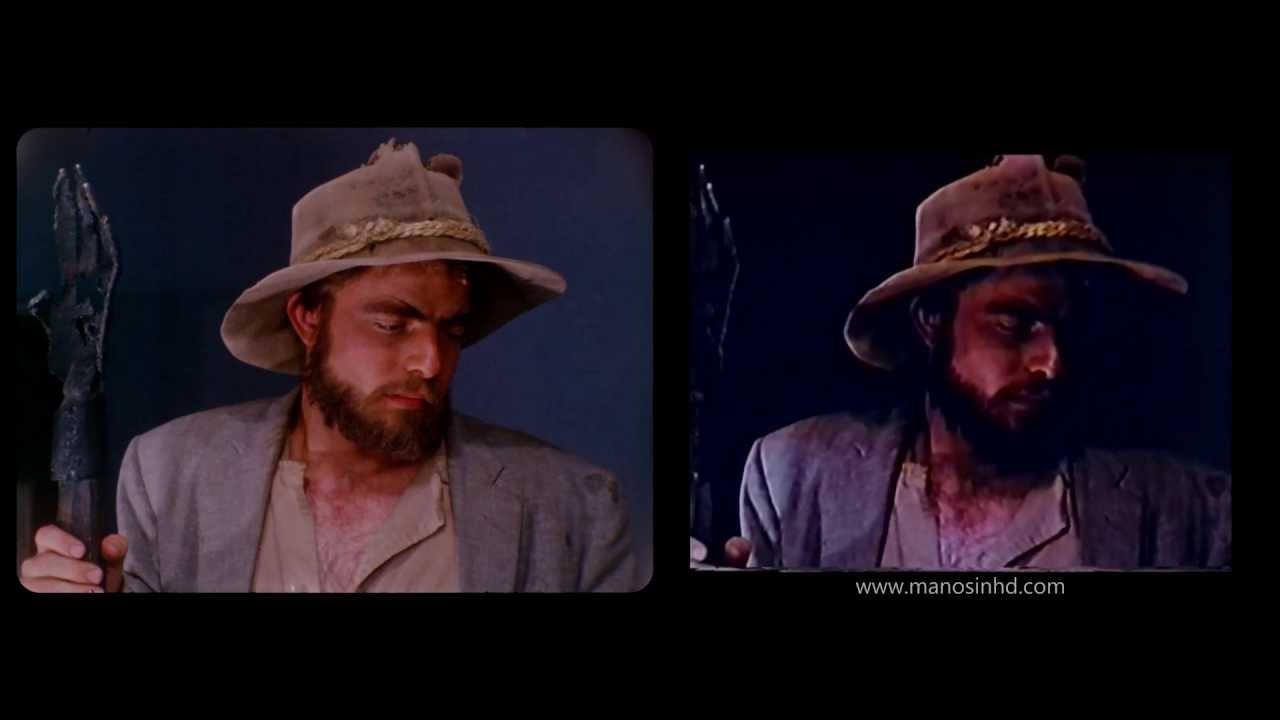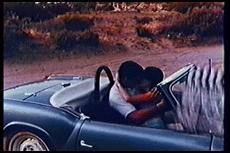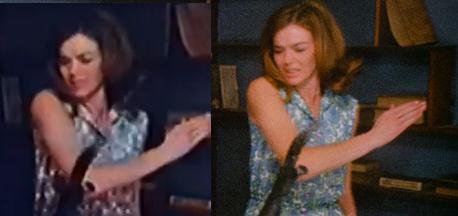Manos: The Hands of Fate
Manos: The Hands of Fate, 1966 (and 2016 Blu-ray restoration), 0 stars
Still the worst of all time?

Compare the restored version on the left with the unrestored on the right, the latter of which has clearly failed as Torgo. (images copyright Synapse Films)
Exclusive to MeierMovies, July 15, 2017
I just watched Synapse Films’ 2K digital restoration of Manos: The Hands of Fate on Blu-ray. (A 4K restoration wouldn’t have made much sense because the film was shot on 16mm.) I’ve long ranked the film as the worst theatrically released movie ever, so, naturally, I thought I knew it. But, frankly, I’m stunned by what I’ve just seen. The difference between the old, familiar (deteriorated) version and this new one is amazing. Although it still looks like it was shot badly on 16mm (grain and all), it’s infinitely brighter, crisper and more colorful. Technical mistakes aside – and there are a ton of them – Manos now almost resembles a real movie. To see what I mean, take a look at this side-by-side comparison on YouTube.
This is presumably how the movie would have looked in 1966. However, because the restoration is based on a work print, one can assume it had to be re-edited to match the final version. In other words, milliseconds at the beginnings and ends of scenes could have been added or deleted, either intentionally or unintentionally. But because project coordinator Benjamin Solovey and the rest of the crew showed such care and dedication (and because the length of the restored film and the older version, which they are now calling the “grindhouse version,” are the same within a few seconds), we can assume the edits are virtually identical. However, Solovey and his team made one interesting deletion: the infamous clapperboard. Yes, director Hal Warren actually left the clapperboard in. You can see if for about half a second at the 7:02 minute mark of the “grindhouse version,” or at the 6:07 mark of the old Alpha Video DVD. I realize Solovey was trying to give us the best version possible of the worst film – oxymoron? – but he should have preserved everything, even one of the most jaw-dropping mistakes ever.

The infamous clapperboard (visible here in the original cut of the film from this “grindhouse” print) was not included in the restored version.
Those of you who have seen only that aforementioned Alpha Video DVD will notice other changes too. Almost a minute’s worth of establishing shots at the beginning of the film are restored, as are about 10 seconds of that godawful singing during the drive to Valley Lodge. (Those pieces of film were part of the original cut but somehow got chopped out of the Alpha Video DVD version.) The new Blu-ray also offers some great extras, including a new 30-minute documentary featuring a great interview with the Master himself, Tom Neyman, before he passed away. (He has left this world, but he is with us always.) And we finally are given an explanation for the incompetent editing: It was done in four hours while drunk. (That is likely hyperbole, but it kind of makes sense.)
The restoration is such an improvement, actually, that I’m tempted to revisit the film’s ranking as worst of all time. Perhaps Birdemic: Shock and Terror is more deserving of the #1 position? … Nah, I think I’ll still hold onto Hands. After all, the restoration just makes all the unintentional jump cuts, buzzing flies, bad acting, horrendous dubbing, out-of-focus shots and other screw-ups even more visible. Manos, you’re still the worst in my book, with or without your clapperboard. And though you’re now more beautiful, deep down you’re still the same pile of shit that fertilizer salesman Warren peddled back in ’66.
© 2017 MeierMovies, LLC
Epilogue
In 2020, after repeat viewings of both Manos and Birdemic, I changed my mind. Say what you want about Manos — it at least offers viewers a weird fever dream. Birdemic, on the other hand, offers nothing but embarrassment. But don’t weep for Manos. After all, “worst film of all time” is no badge of honor. It’s one of shame. And it’s Birdemic‘s turn to cloak that shame — until I perhaps change my mind again.
